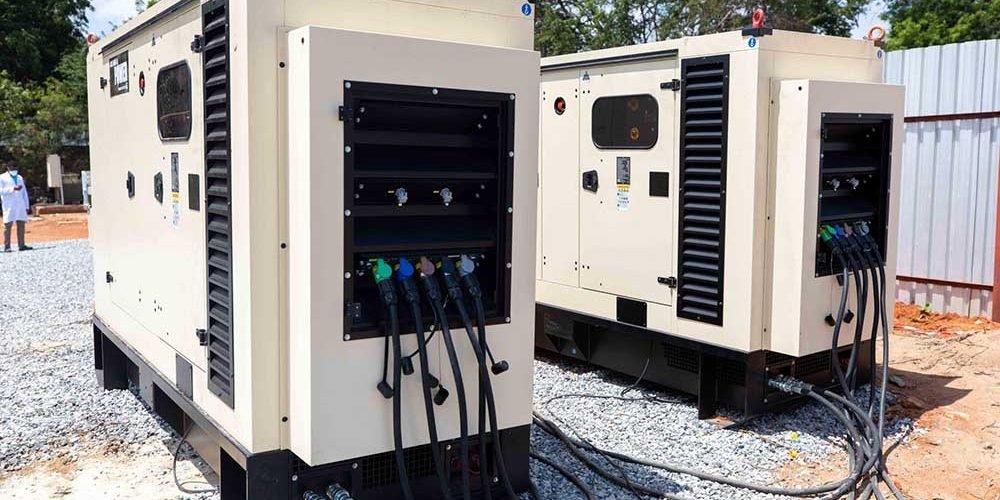Installing a generator brings up a whole host of questions. What size should I get? Which fuel is best? What about noise and permitting?
This comprehensive guide answers all those key questions and more to set your generator project up for success. Follow the essential steps and tips below to achieve generator installation success.
But before that, let’s learn,
Table of Contents
Why Install a New Generator?
A generator installation has three main purposes:
- Life safety – Protecting people in a building through powering systems like fire alarms, sprinklers, elevators, and emergency lighting.
- Optional standby – Keeping non-critical systems running like data centers, apartment amenities, and convenience outlets.
- Legally required standby – Providing backup power to code-mandated systems like fire pumps and senior living facility elevators.
Understanding the purpose of your generator is the first step toward success. Then you can dive into key aspects like sizing, placement, permitting, fuel, and installation.
Reach out to trusted local providers like Generac Generator Installation St Louis MO when you’re ready to get started on your generator installation journey. DIYing isn’t always a good idea!
This guide will walk through the entire process to set your project up for smooth sailing.
Step 1: Proper Sizing Based on Purpose
The sizing of your generator, in kilowatts (kW), must align with its intended purpose.
Here are key factors to consider:
- For life safety systems, ensure the generator can handle critical loads like fire alarms and elevator operation.
- For optional standby uses, compile a list of all loads and determine required wattages. Remember that items like refrigerators and AC units will need extra power for startup.
- For legally required standby systems, consult local codes to determine capacity requirements for loads like fire pumps.
Oversizing your generator comes with increased upfront costs. Undersizing risks disappointment when the power goes out.
Do your homework to get the size just right.
Step 2: Factor in Sound and Emission Regulations
Generator placement on your property can be impacted by local sound and emission rules.
Key items to research beforehand include:
- Noise ordinances – The allowable decibel level of your generator at the property line. More distance means more sound attenuation.
- Emissions standards – Potential air emission regulations and permitting requirements to operate your generator.
- Utility notification – Whether you must inform your utility provider before using the generator.
Identify all relevant regulations early so you can optimize placement and potentially avoid headaches down the road.
Step 3: Select the Right Fuel Source
Your fuel choice comes down to availability, storage, and personal preference.
The main options include:
- Diesel – Sturdy and reliable but requires large onsite fuel storage.
- Natural gas – Clean burning and unlimited supply but depends on consistent gas delivery.
- Propane – Easy to store in tanks but may require frequent refueling.
Consult local codes, as limits often exist on fuel tank size and placement. Also, ensure you have a consistent supply from a reputable provider.
Step 4: Purchase a Quality Generator
You generally get what you pay for with generators. Consider investing in a more premium unit if your application is critical or high-use.
Key aspects to evaluate include:
| Feature | What to Look For |
| Engine Type | Durable industrial-grade engines from trusted manufacturers |
| Generator Windings | Copper windings for top efficiency |
| Fuel System | Advanced fuel injection for reliability |
| Controller | Digital microprocessors for generator monitoring and diagnostics |
| Enclosure | Aluminum, steel, or composite sound enclosures for weather protection |
| Warranty | At least 2-5 years on parts, labor, and travel |
Prioritize durability, power quality, and noise mitigation. This upfront investment will pay dividends over your generator’s lifetime.
Step 5: Comply with Installation Codes
All generators must be installed properly according to relevant electrical, fire, and building codes.
Key areas to address:
- Electrical – Proper transfer switch installation, grounding, and bonding.
- Fuel – Compliance with tank size limits and fire codes. UL approval may be required.
- Mechanical – Correct handling of ventilation, exhaust, and emissions.
- Permitting – Potential inspections from local authorities before operation.
Leaving code compliance as an afterthought creates safety risks and code violations. Do it right from the start.
Step 6: Hire an Experienced Installer
Generator installation is extremely complex. Allow licensed electricians and technicians to handle the job.
Signs of a qualified installer:
- Strong technical knowledge of generators and codes
- Usage of proper procedures and techniques
- Clean and organized work area
- Extensive experience with similar projects
- Proof of licensing and insurance
Don’t cut corners here – generator installation is not DIY. Hire pros and sleep easy knowing the job is done safely.
Step 7: Develop a Maintenance Plan
The work does not stop once your generator is up and running. You must implement a rigorous maintenance schedule to ensure reliability over decades of service.
Weekly Maintenance
- Test run the generator under load
- Check fuel levels and electrical systems
- Inspect for leaks, debris, and loose connections
Annual Maintenance
- Change oil, coolant, and filters
- Clean and adjust components like the radiator, injectors, and transfer switch
- Load bank test to confirm full operation
Other Important Service
- Battery replacement every 2-4 years
- Coolant flush every 2-4 years
- Major tune-ups every 250 hours or 3-5 years
Don’t skip maintenance – it is the only way to get maximum value from your investment.
Conclusion
Generator installation allows you to take control of your power resiliency. Follow this guide to achieve success with your project:
- Properly size your generator for intended loads
- Comply with sound, emission, and fuel regulations
- Select durable, high-quality system components
- Develop a comprehensive maintenance plan
- Partner with experienced installation technicians
Take a methodical approach and your generator will provide power protection for decades to come.
Frequently Asked Questions
Q: How Often Should I Test My Generator?
A: Test your generator weekly by running it for 10-15 minutes under load. This is to confirm everything is working properly. Perform an annual test under full building load for 1 hour.
Q: How Long Will a Generator Run on a Tank of Fuel?
A: Generator run time depends on load level and tank size. A typical home standby generator with a 100-gallon tank can run 10-15 hours at 50% load. Higher loads deplete fuel faster.
Q: What Permits Are Required to Install a Generator?
A: Electrical, building and potentially environmental permits are common. Fuel storage over certain limits requires fire marshal approval. Check with local authorities.
Q: How Much Noise Do Generators Make?
A: Most emit 55-75 dBA measured at 23 feet. Sound enclosures can reduce noise by 10-15 dBA. Placement, barriers, and vegetation also minimize noise impact.





